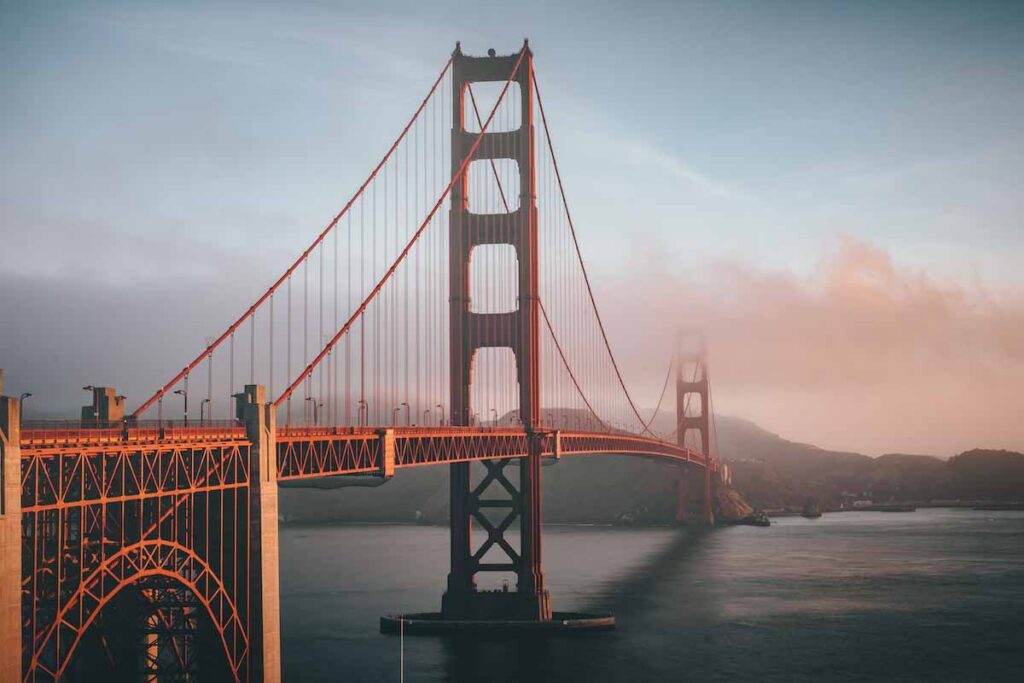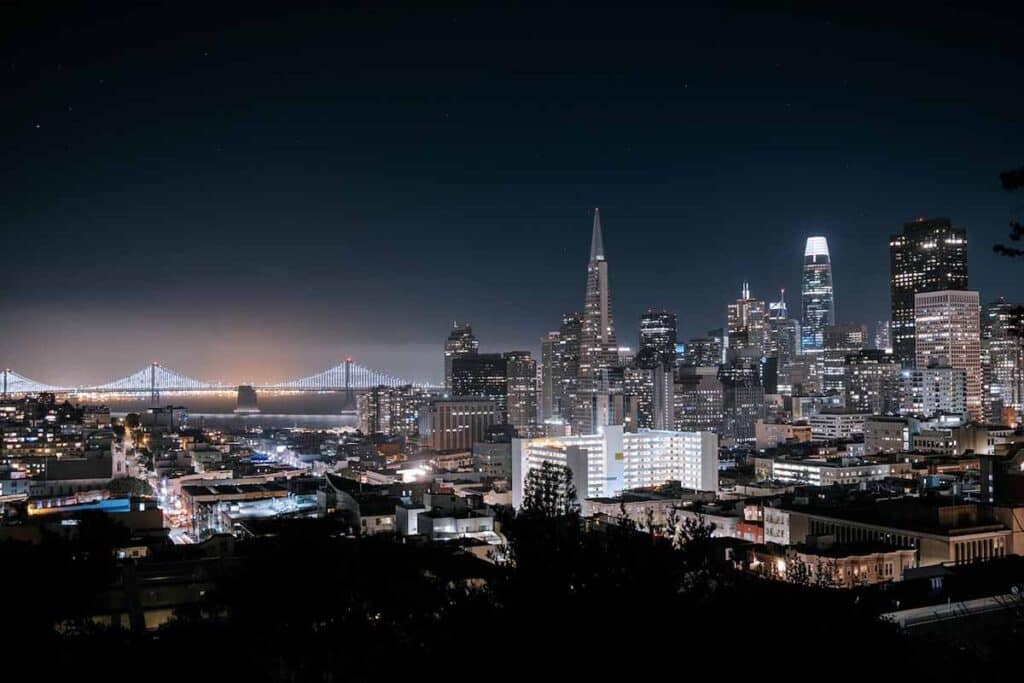With many things San Francisco is known for, including its cool summer, it isn’t surprising for some people to consider it a top place to visit or even retire in. But how about winter? Does it snow in San Francisco? After all, a freezing cold winter is one of the things most of us don’t appreciate.
So, does it snow in San Francisco? Although snow isn’t a regular occurrence in the City of San Francisco during winter, residents can experience it. In fact, there were instances when there was significant or measurable snowfall in the city.
Knowing that the answer to “Does it ever snow in San Francisco?” is a yes, let’s find out how often it snows in the city and the different years or days residents experienced significant snowfall. Let’s also look at what winter is really like in the city.

How Often Does It Snow?
Keep in mind that snow occurs when the temperature is too low, and the air has a significant amount of moisture. In San Francisco or Northern California, there is a high moisture level, but the Pacific Ocean warms the air even before reaching the land.
Therefore, snow is rare, with only 10 measurable or significant snow accumulations recorded since 1852. The main reason is that the moist air isn’t cool enough.
When it comes to how often it snows in San Francisco, experts used to predict that significant snowfall at sea levels and even flurries in San Francisco can happen every two decades. However, as the world becomes warmer, this predicted return rate of snowfall increased to 30 years and higher.
When Was San Francisco’s Last Snowfall?
On the night of the 25th of February, 2011, it was reported that San Francisco experienced a light snowfall., but not enough to be measured. Thus, as of writing, the last recorded significant or measurable snowfall happened 46 years ago.
This historical event occurred on the 5th of February, 1976, and covered the Twin Peaks, Mount Davidson, and Mount Sutro with approximately five inches of snow. At higher elevations, such as Mt. Tamalpais and Mt. Diablo, they were covered with more than five inches of snow.
Since the snow fell downtown, the city was covered with snow, from trace amounts to one-inch accumulations.
Other Recorded Snowstorms in San Francisco
Since the answers to “Does it snow in San Francisco?” and “How often does it snow in San Francisco?” are yes and rarely, let’s go back in time and see the other times the city experienced snow.
While the city also experienced flurries and snow accumulation of less than an inch, it’s usually only above sea level, meaning the snow only accumulated at the mountain ranges. As such, we only included snowstorms with a snow depth of one inch and above.
That said, on the 30th of December, 1856, the city experienced an unusually low temperature, with the lowest reading of around 39 degrees Fahrenheit (3.8 degrees Celsius). It also recorded a 63.5-millimeter or 2.5-inch snowfall accumulation.
This incident made reporters wonder whether the season is starting to change due to innovations, which we’ve already been calling climate change in the last few years.
However, the next recorded heavy snowfall in San Francisco occurred almost 30 years after. Specifically, on the 31st of December, 1882, it snowed for five straight hours, leading to a snow accumulation of 90 millimeters or 3.5 inches. Then, on the 7th of February, 1884, the city recorded a depth of 1.5 to 2.0 inches of snow.
Following this event is the snowiest and wettest day in the history of San Francisco, as of writing. On the 5th of February 1887, the snow started falling around three in the morning and continued for hours.
Ninety-four millimeters (3.7 inches) of snow blanketed the city’s downtown. Meanwhile, the highly elevated western parts were covered with up to 177.8 millimeters (seven inches) of snow.
Golden Gate Park also had one of the deepest snow accumulations but was damage-free after the snowstorm. On the contrary, tree branches crashed while the Conservatory of Flowers’ windows were broken due to the accumulated, mounded snow’s heavy weight.
The next snowstorm that followed was on the 3rd of March, 1896, with only an inch of accumulation.
What Is Winter Like in San Francisco?

What you’ll expect during wintertime in the place you’re moving to or visiting is important. That’s especially true since snow is rare in San Francisco, and the climate is generally warm to cool.
Having an idea of the weather that awaits you assures you’ll be able to pack into your luggage (view on Amazon) clothes that will be truly essential.
The Typical Climate
You’ll expect low temperatures during winter. Apart from that, the winter season is the windiest and rainiest time of the year in San Francisco.
However, you’ll experience extended calm weather when the storm shifts to the north. Since high pressure dominates during these periods, the atmosphere is generally dry and stable.
The Winter Months
The winter season in San Francisco starts in December and ends in March. Of course, how cold, windy, and rainy it is in each month is different. So let’s look take a closer look at each of them.
December
Being the first month when the winter season kicks in, the average day temperature in San Francisco is 56.8F (14.8C). It gets colder at night and early morning, with an average temperature of 46.7F (8.2C).
In terms of precipitation, San Francisco recorded an average rainfall of 11 days and 80.7 millimeters (3.18 inches) for December.
January
This month is usually the rainiest and coldest, with an average rainfall of 12 millimeters (4.72 inches) and an average lowest temperature of 46.4F (8C).
February
As the winter season is nearing its end, you’ll expect warmer days in February compared to January. The average lowest temperature is 48.5F (9.2C), while the highest is 61.4F (16.3C). In terms of rain, it’s around 105.4 millimeters (4.15 inches).
March
When asking, “Does it ever snow in San Francisco?” you’ll find that as of writing, there was no snowfall in March. Perhaps it’s because it’s the hottest winter month in the city.
That said, the average highest temperature recorded for March is 62.5F (16.9C), while the lowest is 49.2F (9.6C). Moderate and heavy rainfall is also common for this month, reaching an average of 10.54 millimeters (4.15 inches).
FAQs About San Francisco Winter

Knowing that winter is windy, rainy, cold, and at times, snowy, here are some other essential bits of information about San Francisco weather and winter:
How Cold Can It Get in San Francisco?
Since the answer to “Does it snow in San Francisco?” is yes, you rarely expect below-zero temperatures.
That said, the lowest temperature in San Francisco during the winter months is around the mid-50 degrees Fahrenheit (18C) in the morning. In the afternoon, the temperature will start hitting the low 50’s (11C) and reach as low as 40F (9C) comes night.
If you’re from a state with cold winters, like Maine and Alaska, you’ll find San Francisco’s coldest months very tolerable.
How Windy Is San Francisco?
With an average annual wind speed of 10.6MPH, you surely want to hold on to those hats when the wind starts to blow. It can range from a gentle breeze to a howling gale.
During wintertime, the wind from the Pacific will blow right through the city from the west to the east. But when it hits the downtown grid, it will feel like a wind tunnel.
How Much Rain Does San Francisco Receive?
The city typically experiences 72 days of precipitation with an average of 25 inches of rainfall in a year. 75% of which happens from early December to late March.
However, in 2019, the recorded rainfall in the city surpassed that of the typically rainy Seattle, labeling it the rainiest year in San Francisco’s history. Then, a year after, the city only had very little rainfall. Specifically, it was 30 to 45% lower than expected; February 2020 was rain-free!
These non-typical fluctuations in the city’s annual rainfall are still unpredictable. Hence, if you’re visiting San Francisco, you better come prepared, so pack rain gear like this windproof portable umbrella (view on Amazon). That is, whether you’re arriving in spring, summer, fall, or winter.
What to Do in San Francisco During Winter?
If you plan to book a trip to San Francisco during the winter season, you’ll find many fun things to do. The same goes if you move for good; you won’t run out of new activities to enjoy while living in the city.
Do you want to warm up but are tired of your home heating system? San Francisco has a long list of fireplaces built inside fine dining restaurants, bars, and outdoor patios that you can enjoy.
You may also visit cafes serving the most delicious hot chocolate drinks. They include Dandelion Chocolate, Ghirardelli Ice Cream & Chocolate Shop, and La Oaxaqueña.
To feel the spirit of Christmas, why not enjoy Bay Area’s holiday light displays? You can check out the enchanted LED garden in Golden Gate Park from December to the 12th of March.
From December 2nd to the 11th, you can go to downtown San Francisco and enjoy the city’s largest holiday light display. In January, you can enjoy the annual Illuminate SF Festival of Light.
Are you missing the snow? Pack your travel bag (view on Amazon) and plan a trip to the nearby mountains that are usually covered with snow during the winter. You have several options: Arnold, Dodge Ridge, Lake Tahoe, Pinecrest, and Yosemite.
Does It Snow in San Francisco: In Conclusion
From flurries to five inches deep of snow accumulation below sea level, San Francisco doesn’t really have a snow-free winter. However, it isn’t something you’ll expect every year since, based on history, snowfall occurs between 20 to 30 years or even more. And in case it does snow, it usually happens in December, January, and February.
Therefore, San Francisco is among the best places to travel or move to if you want to escape the freezing-cold winter or live in an area with more tolerable winter months. Plus, there are many places to visit and activities to enjoy all year round, whether alone or with your partner, friends, or family.
